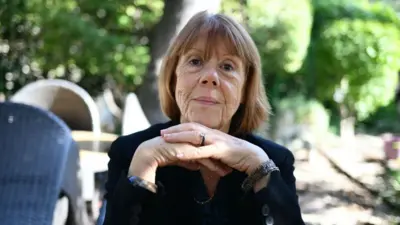We've updated our Privacy and Cookies Policy
We've made some important changes to our Privacy and Cookies Policy and we want you to know what this means for you and your data.
Marian Kotleba and the rise of Slovakia's extreme right
Image source, sme.sk
- Author, Rob Cameron
- Role, ┤¾¤¾┤½├¢ News, Bratislava
As Prime Minister Robert Fico begins the difficult task of building a majority coalition, there's shock in Slovakia at the real sensation of this election: the strong showing by Marian Kotleba and his ultra-nationalist People's Party-Our Slovakia.
Mr Kotleba made headlines when he won the 2013 regional elections in Banska Bystrica, where he now serves as governor.
The term "neo-Nazi" is often bandied about, at times foolishly, to describe anyone with views slightly to the right of Marine Le Pen.
But Marian Kotleba is different - he was, once, literally a neo-Nazi.
Until recently, he dressed in a uniform modelled on the Hlinka Guard, the militia of the 1939-45 Nazi-sponsored Slovak State.
He and his followers adopted the mannerisms, greetings, symbols and rhetoric of that state, Slovakia's first ill-fated flirtation with sovereignty.
And make no mistake, the Slovak State was an authoritarian, clerical-fascist regime modelled on Nazi Germany. The Hlinka Guard enthusiastically hounded the regime's enemies, most of all Jews.
The Jews were disposed of under a unique 1941 agreement that was cynical even by the standards of wartime Central Europe.
Slovakia offered to pay Berlin 500 Reichsmarks for each Jew deported to Germany, as part of its obligation to send 120,000 labourers to Hitler, on condition they did not return.
And they did not return.
An estimated 75,000 Slovak Jews, 83% of the pre-war total, were killed in Nazi death camps, even after Slovakia's wartime leader Jozef Tiso reluctantly halted the deportations following protests from the Vatican.
This is the regime venerated by Marian Kotleba and his 13 newly-elected fellow deputies in his People's Party-Our Slovakia party. It's a regime he once described as "like living in heaven".
Image source, Keystone/Hulton Archive/Getty Images
In 2014, on the 75th anniversary of the foundation of the Slovak State, the local newspaper in the city of Banska Bystrica announced that Governor Kotleba had "liberated" the town hall by taking down the flag of the European Union. He despises both the EU and Nato, describing that organisation as "terrorist".
Since he became governor, the Hlinka Guard-inspired uniforms have been put away in the wardrobe - he now appears to favour a rather thick brown corduroy instead. But Slovak commentators say that, while the clothes might have changed, the tattoos, and the views, have not.
Image source, AFP/Getty Images
Kotleba's party appears to have attracted many first-time voters - young people living in depressed areas of Slovakia - by stoking fears over the migrant crisis. Kotleba described those Slovak MEPs who voted in favour of EU migrant quotas as 'traitors'.
His face appeared on campaign billboards with the slogan 'Stop Immigrants!'
"This is a moment of great shame for Slovakia," said Tom Nicholson, a British-Canadian journalist for the daily SME who has lived in the country for 23 years.
"[Mr Kotleba's party] is not like the French National Front, which is far-right. These are Nazis," Mr Nicholson told the ┤¾¤¾┤½├¢.
"These are skinheads who Sieg Heil in public, and have rallies in Bratislava - 1,500 to 2,000 people - shouting hatred towards refugees and migrants from the Middle East," he went on.
Image source, STR/AFP/Getty Images
And here we get to the crux of the matter. An object lesson, if you like, for Central Europe and the continent as a whole.
Many of the parties standing for Slovakia's election, including mainstream moderate parties such as the leftist prime minister's SMER, campaigned heavily on the refugee issue in recent months, warning of an "invasion" of Muslim migrants that would "overwhelm" this small Christian nation of five million people.
Commentators warned the febrile rhetoric risked unleashing the demons of Central Europe, of uncorking the bottle that holds the genie of European nationalism.
This, they say, is the result.
Top Stories
More to explore
Most read
Content is not available








